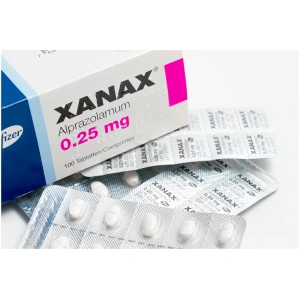Xanax: Understanding its Uses, Benefits, and Risks
Xanax, the brand name for alprazolam, belongs to a class of medications known as benzodiazepines, commonly prescribed for managing anxiety and panic disorders. As one of the most frequently prescribed psychiatric medications, understanding Xanax’s use is essential for both patients and caregivers. In this article, we will explore Xanax’s efficacy, potential benefits, and associated risks.
What is Xanax and How Does It Work?
Xanax is primarily known for its fast-acting properties. When taken, it influences the central nervous system by enhancing the effects of a neurotransmitter called gamma-aminobutyric acid (GABA). GABA plays a crucial role in regulating nerve activity, leading to a calming effect on the brain. This makes Xanax effective for alleviating anxiety symptoms and preventing panic attacks.
Patients commonly use Xanax for various anxiety-related conditions, including generalized anxiety disorder (GAD), social anxiety disorder, and panic disorder. Its rapid onset makes it particularly appealing to many individuals who experience acute anxiety episodes.
Common Uses of Xanax
The primary use of Xanax is to treat anxiety disorders. Many patients find relief from their symptoms with this medication, allowing them to regain control over their daily lives. In particular, Xanax can be beneficial for individuals facing:
1. Generalized Anxiety Disorder (GAD): For those who grapple with excessive worry about various aspects of life, Xanax can help reduce that overwhelming sense of dread.
2. Panic Disorder: People who experience sudden and repeated panic attacks may find Xanax provides quick relief, allowing them to manage their symptoms with greater ease.
3. Preoperative Anxiety: Some medical professionals prescribe Xanax to help patients manage anxiety before surgeries or medical procedures.
Benefits of Taking Xanax
While Xanax undoubtedly has its risks, it also offers several benefits that make it a valuable tool in mental health treatment. Here are some benefits associated with Xanax:
– Rapid Relief: One of the most significant advantages of Xanax is how quickly it acts. Patients may notice improvements within hours of taking the medication, making it a go-to option for those needing immediate help.
– Improved Quality of Life: For many, successfully managing anxiety can lead to a more fulfilling life. With fewer anxiety symptoms, patients often report higher levels of satisfaction in their personal and professional lives.
– Well-Tolerated: In general, most people tolerate Xanax well when taken as prescribed. Regular monitoring by healthcare providers can minimize adverse effects.
Risks and Side Effects of Xanax
Despite its benefits, Xanax is not without its risks. Understanding these can help patients make informed decisions. Common side effects include:
– Drowsiness: Many users experience sedation, which can affect their daily activities. It’s crucial to avoid driving or operating heavy machinery until they know how Xanax affects them.
– Dependence and Withdrawal: Xanax carries a risk of dependence, leading some individuals to misuse the medication. Stopping Xanax abruptly can cause withdrawal symptoms, such as anxiety, seizures, and irritability. Gradual reduction under medical supervision is essential when discontinuing use.
– Cognitive Impairment: Long-term use may lead to issues with memory, attention, and coordination. Patients should be vigilant about these symptoms and discuss any concerns with their healthcare provider.
Responsible Use of Xanax
For individuals prescribed Xanax, responsible use is crucial. It is essential to follow the prescribed dosage and frequency strictly. Here are some tips for ensuring safe usage:
– Communicate with Your Doctor: Regular conversations with your healthcare provider can help monitor the effectiveness of Xanax and any side effects experienced. Do not hesitate to voice any concerns.
– Avoid Mixing with Alcohol: Combining Xanax with alcohol can enhance its sedative effects, increasing the risk of respiratory depression and other serious side effects.
– Consider Therapy: While Xanax can provide relief, it should ideally be used in conjunction with cognitive-behavioral therapy (CBT) or other therapeutic approaches for long-term management of anxiety.
Conclusion: Xanax as a Valuable Resource
In summary, Xanax can be a valuable resource for individuals seeking to manage anxiety and panic disorders effectively. When used responsibly and under the guidance of a healthcare professional, its rapid relief and potential for improved quality of life make it a powerful ally in the battle against anxiety. However, understanding the risks, maintaining open communication with healthcare providers, and considering therapeutic alternatives are crucial for safe and effective use.
If you or someone you know may benefit from Xanax, don’t hesitate to reach out to a healthcare professional to discuss the best options for anxiety management tailored to individual needs.







Reviews
There are no reviews yet.